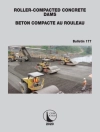Innovation in construction is essential for growth. The industry
strives to remain competitive using a variety of approaches and
needs to engage structured initiatives linked to proven innovation
concepts, techniques and applications. Even in mature markets like
the Architecture, Engineering and Construction (AEC) sector, where
business behaviour is generally considered as being risk averse, it
is increasingly important to embed innovation into mainstream
business practices.
In Construction Innovation and Process Improvement a
number of wide ranging issues from construction practice in
different countries with different contexts are presented to
provide a rich collection of literature embracing theory and
practice.
Chapters are divided into three broad themes of construction
innovation relating to: Theory and Practice; Process Drivers; and
Future Technologies. Several questions are posed, including for
example: What is particularly unique about construction innovation
in theory and practice? What are the major drivers of construction
innovation? What factors are needed to support and deliver future
construction technologies?
In attempting to respond to such questions, the book sheds new
light on these challenges, and provides readers with a number of
ways forward, especially cognisant of the increased role of
globalisation, the enhanced impact of knowledge, and importance of
innovation. All these can have a significant impact on strategic
decision-making, competitive advantage, and sustainable policies
and practices.
Part One deals with change management, technology, sustainable
construction, and supply chain management; Part Two addresses
innovation and process improvement drivers, including strategic
management, concurrent engineering, risk management, innovative
procurement, knowledge management; Part Three explores future
technologies in construction – and particularly, how these
can be harnessed and leveraged to help procure innovation and
process improvement.
Spis treści
Chapter 1 Introduction: Learning from other industries.
Chapter 2 Innovation and changes in industrial practice.
Chapter 3 Management of Change.
Chapter 4 Lean production.
Chapter 5 Integrated manufacturing.
Chapter 6 Concurrent Engineering.
Chapter 7 Materials requirements planning.
Chapter 8 Just-in-Time manufacturing.
Chapter 9 Supply chain management.
Chapter 10 Knowledge management applications.
Chapter 11 Quick response systems – Agile manufacturing.
Chapter 12 Electronic data interchange.
Chapter 13 Radio Frequency Identification Devices
O autorze
Akintola Akintoye, Professor of Construction Economics and
Management, Dean of School of Built and Natural Environment,
University of Central Lancashire, UK; Joint Editor of Journal of
Financial Management of Property and Construction, Joint
Coordinator of CIB TG72: Public Private Partnerships
Jack Goulding, Professor of Construction Project
Management, University of Central Lancashire, UK, Joint Editor of
Journal of Construction Innovation, Joint Coordinator of CIB TG74:
New Production and Business Models in Construction
Girma Zawdie Senior Lecturer in Innovation Management
& Policy and International Development at Strathclyde
University, Glasgow, UK; Joint Editor of International Journal of
Technology Management and Sustainable Development












